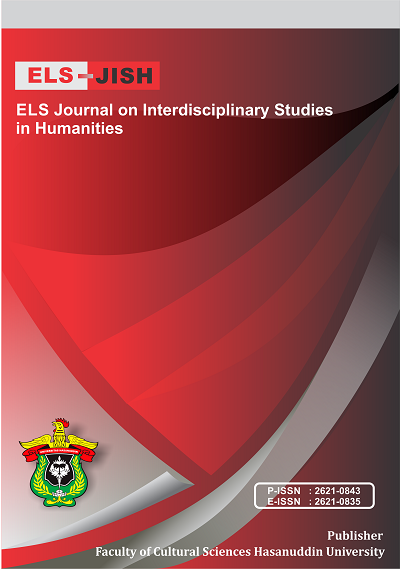The Tradition of Paying Dowry: A Case of Biak Wardo Tribe in Ayau Islands, Raja Ampat
DOI:
https://doi.org/10.34050/elsjish.v5i3.23006Keywords:
Culture Diversity, Dowry Tradition, Marriage TraditionAbstract
Indonesia has a diversity of religions and cultures therefore when we talk about marriage that is framed in a relationship with God and tradition or customary positive law, it is certain that each region has differences in the implementation which is unique. Culture is something that can be used as a unique and distinctive identity for an area. Indonesia has many kinds of culture and traditions. These traditions are usually used as a rule or pattern of life of the community in everyday life. One of them is marriage, one of the important elements in marriage is the payment of a dowry. Marriage processions have procedures that vary according to tradition in society, and each culture has a way of interpreting the dowry itself. This is the case with the marriage customs of the Biak Wardo Tribe in the Ayau Islands District. This study aims to determine the dowry payment tradition of the Biak Wardo Tribe in the Ayau Archipelago District, Raja Ampat Regency, and to find out the obstacles faced in the Biak Wardo Tribal dowry payment tradition in the district. Ayau Islands, Raja Ampat Regency. The method used in this study used qualitative methods and analyzed descriptively qualitatively. This study also uses the discipline approach of Anthropology and Sociology. Data Collection Techniques with Observation, Interviews, and Documentation, Data Analysis Techniques. The results of this study indicate that the tradition of paying the dowry of the Biak Wardo tribe, Ayau islands, Raja Ampat district is divided into three parts, namely Sanepen, Ararem and Anum. The obstacle that often occurs is the addition of dowry payments from the woman's family so that the man must pay it on the same day while the extra requested is not given in the agreed note, it is often troublesome for the man's family but the man must still pay it on that day also so that the payment of the dowry is considered legal.
References
Adi, Isbandi Rukminto. (2015). Kesejahteraan Sosial (Pekerjaan Sosial, Pembangunan Sosial, dan Kajian Pembanggunan). Jakarta: Rajawali Pers.
Daeng, J. Hans. (1985). Pesta, Persaingan dan Harga Diri pada Beberapa Kelompok Etnis di Flores. Jakarta: Yayasan Obor Indonesia.
Hastuti, Hepi, dkk. (2021). Proses Komunikasi Simbolik Adat Mas Kawin di Kampung Wayori Distrik Supiori Barat Kabupaten Supiori. Copi Susu: Jurnal Komunikasi, Politik & Sosiologi. 3(1). 53-65.
Koentjaraningrat. (1990). Beberapa pokok antropologi sosial. Jakarta: Dian Rakyat.
Loppies, Imelda J. (2019). Persepsi Masyarakat Terhadap Adat Perkawinan Suku Biak Di Kampung Yendidori Distrik Yendidori Kabupaten Biak Numfor. Gema Kampus. 14(1).1-10. Doi: https://doi.org/10.52049/gemakampus.v14i1.74
Mardani. (2017). Hukum Keluarga Islam di Indonesia. Jakarta: Kencana Prenada Media Group.
Moleong, J., Lexy. (2015). Metodologi Penelitian Kualitatif. Bandung:Remaja Rosdakarya
Soegiarto, N., Et al. (1999). Monografi daerah Irian Jaya. Jakarta:Proyek Media Kebudayaan, Departemen Pendidikan dan Kebudayaan.
Downloads
Published
Issue
Section
License
Copyright (c) 2022 Nanik Purwanti, Uswatul Mardliyah, Yonas Yapen

This work is licensed under a Creative Commons Attribution-NonCommercial-ShareAlike 4.0 International License.






